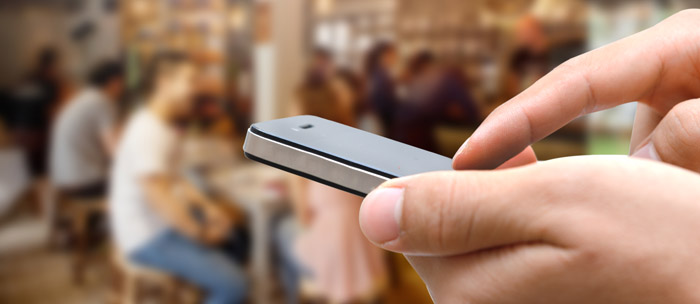How Guest Demands are Shaping Restaurants’ Customer Service
Technology seems to be transforming every part of our existence, and the restaurant industry is no exception. Today’s diner is more demanding and informed than ever. Whether the restaurant offers a fast-casual or fine-dining experience, its patrons expect stellar customer service, transparency, ease of access and information on demand. Following the meal, he or she is happy to share an opinion on Yelp and other mobile review sites.
How can restaurants make the most of these trends? By being aware and proactive when necessary. Here’s how we see restaurant technology evolving.
Self-service is proliferating. Self-service takes a variety of approaches, but it starts with a restaurant’s online presence. Your patrons want to be able to find the answers to any questions they might have on their own. If you don’t give those answers to them via your website (i.e. a menu with prices, hours of operation, style of food, ambiance, etc.) they will find it—and it might not be as positive if it comes from third parties and review sites.
Responsiveness is key. Technology has created an expectation of immediate gratification. If a consumer poses a question via email, online or by phone, he or she expects an answer quickly. A few years ago, it was acceptable to wait 24 or 48 hours to respond. Today, four hours is the sweet spot, according to a 2013 survey by Steve Van Belleghem (along with data and translation partners). While the responsibility lies with the proprietor, there are plenty of services, such as Hootsuite and Mention, to help manage your restaurant’s social media presence.
Quality trumps price. Based on the dominance of fast-casual over quick-service restaurants, it’s clear that customers are speaking through their pocketbooks; namely, that they’re willing to pay more for better food. That goes for more formal dining experiences, as well. A survey by Vision Critical found that 86 percent of customers are willing to spend more on a better experience, and 70 percent of experiences are based on how a customer feels when paying the bill. As more demands are placed on our time, we are hungrier for meaningful and authentic interaction, and we’re willing to splurge a little on it.
Delivery is easier to provide. Today’s customer wants personalized service, i.e. a meal that fits into their schedule and meets their dietary needs. Apps such as GrubHub have revolutionized the variety offered by delivery service. Be willing to mix things up and give customers what they want. If they want delivery, make it happen. With competing apps and services on the market, it’s easier now than ever.
Consider providing digital detox. A number of restaurants have made headlines for offering no-phone dining zones. The move makes sense, considering the recent rise in polite apps, such as “Shhhh” and “Polite Droid,” which turn off phone notifications and alarms, freeing users from distractions. While a phone-free zone may not work for every restaurant—diners in a rowdy sports bar might stage a coup—it could work well in an upscale dining room.
In 2015, these trends will continue and even grow, as customers become more demanding. They will expect authenticity from restaurants, including on-point service from a well-trained, personable staff who want to get to know them at least a little—not just sell them an extra dessert. Taking your restaurant from good to great can be challenging, but with careful planning, a roadmap and effective training and follow-up, you’ll reap the rewards in no time.
To learn more about customer service trends and future predictions check out “Looking Back on 2014 Customer Service Trends & Looking Forward to 2015 Customer Service Predictions,” an e-book by Impact Learning Systems—An MHI Global Company.
Source: Restaurant-Hospitality.com; by Jodi Beuder
If you’d like to receive a FREE, no-obligation quote for a business loan through ARF Financial, click here! Or, learn more about the approval and payback process for our loans here!


